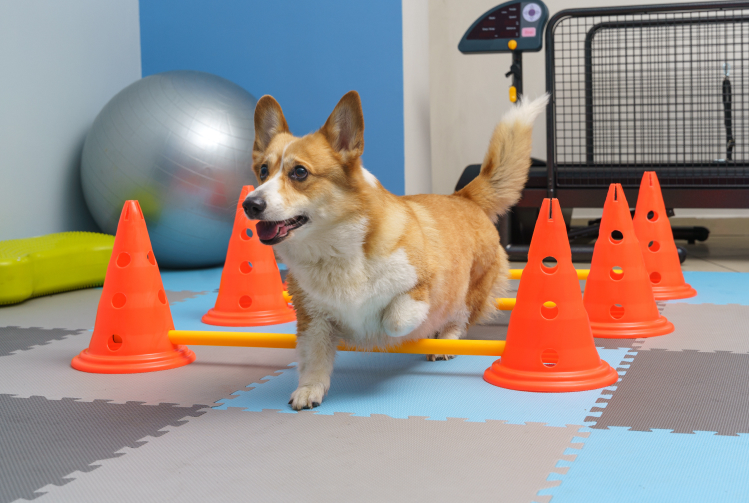Studies show that around 20% of dogs will experience joint or mobility issues during their lifetime, with the risk even higher in breeds predisposed to orthopaedic problems. When your furry companion requires surgery, the recovery journey can feel overwhelming, as healing demands time, care and patience.
Hydrotherapy has become one of the most effective tools in post-surgical rehabilitation. By combining warm water, guided movement and minimal joint stress, it creates an ideal environment for healing. Explore how aquatic therapy supports recovery, strengthens muscles and helps your pet regain mobility with greater comfort in this article.
What Is Hydrotherapy for Pets?
Hydrotherapy, also known as aquatic therapy or aquatherapy, is a form of physical
rehabilitation that harnesses the unique properties of water to facilitate healing and
recovery. For canines, hydrotherapy is a form of non-weight-bearing exercise; this can be
seen in either a swimming pool or the use of an underwater treadmill.
Dog rehabilitation clinics typically employ three primary types of hydrotherapy, each offering distinct advantages:
- Underwater Treadmill Therapy: The underwater treadmill allows us to gradually and gently introduce controlled levels of weight-bearing exercises by varying the water level.
- Whirlpool Therapy: Whirlpool therapy is often used on dogs post-surgery as it can reduce pain substantially. Once the dog has entered the water, a warm jet stream comes on, which is essentially massaging the dog and helping ease the pain of their injury.
- Assisted Swimming: Swimming and performing guided exercises in a dog pool provides your pooch with a non-weight-bearing way to get joints moving, build strength and have a personalised cardio workout.
How Does Aquatic Therapy Help?
The therapeutic power of hydrotherapy comes from the unique properties of water, each offering specific benefits that support post-surgical recovery. In veterinary rehabilitation centres, the water is carefully maintained between 27°C and 33°C to ensure comfort while promoting healing.
Hydrotherapy is commonly used to aid recovery after a wide range of surgical procedures, including:
- Tibial plateau levelling osteotomy (TPLO) and cruciate ligament repair
- Hip and elbow dysplasia surgeries
- Spinal surgery
- Fracture repair and other soft tissue procedures
Health Benefits of Hydrotherapy for Post-Surgical Recovery
Using the natural properties of water—buoyancy, resistance and hydrostatic pressure—hydrotherapy supports recovery in ways land-based exercise cannot. It reduces strain on healing joints while promoting strength, mobility, and overall wellness.
Pain Relief & Reduced Inflammation
Hydrotherapy works as a gentle complement to medication, particularly helpful in Singapore’s warm climate where outdoor rehab can be stressful for pets. Hydrostatic pressure acts like a natural compression band, easing swelling and reducing inflammation around surgical sites to support faster healing.
Muscle Strengthening & Conditioning
Post-surgical pets often face muscle weakness and atrophy. Water provides safe resistance without joint stress, allowing effective muscle strengthening with minimal risk. For example, walking 3 km on an underwater treadmill with water at elbow height is equivalent to running 6-8 km on land, but with far less impact.
Improved Range of Motion & Flexibility
Joint stiffness and limited mobility often linger even after wounds have healed. The supportive environment of water encourages gentle stretching, restoring flexibility and improving overall movement.
Aids in Weight Management
Hydrotherapy burns calories efficiently without stressing delicate joints, making it ideal for overweight pets or those unable to exercise on land. Regular sessions also improve cardiovascular health and metabolism, helping pets stay fit and strong long after recovery.
Faster Recovery and Healing
By boosting circulation, hydrotherapy delivers oxygen and nutrients to healing tissues while clearing waste products that slow repair. With time, it also strengthens the heart and lungs, promoting both recovery and long-term health.
Is Aquatic Therapy Good for All Dogs?
Whilst hydrotherapy offers remarkable benefits for post-surgical recovery, it may not be appropriate for every pet or every surgical situation. Certain injuries may not respond well, and dogs with unstable spines should avoid aquatic therapy altogether.
If you are considering hydrotherapy for your pet, consult our veterinary rehabilitation specialists at Advanced Animal Rehabilitation to schedule a comprehensive assessment and determine if it is the right option. Contact us today to schedule an appointment.




